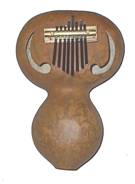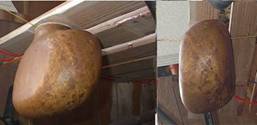Bugles
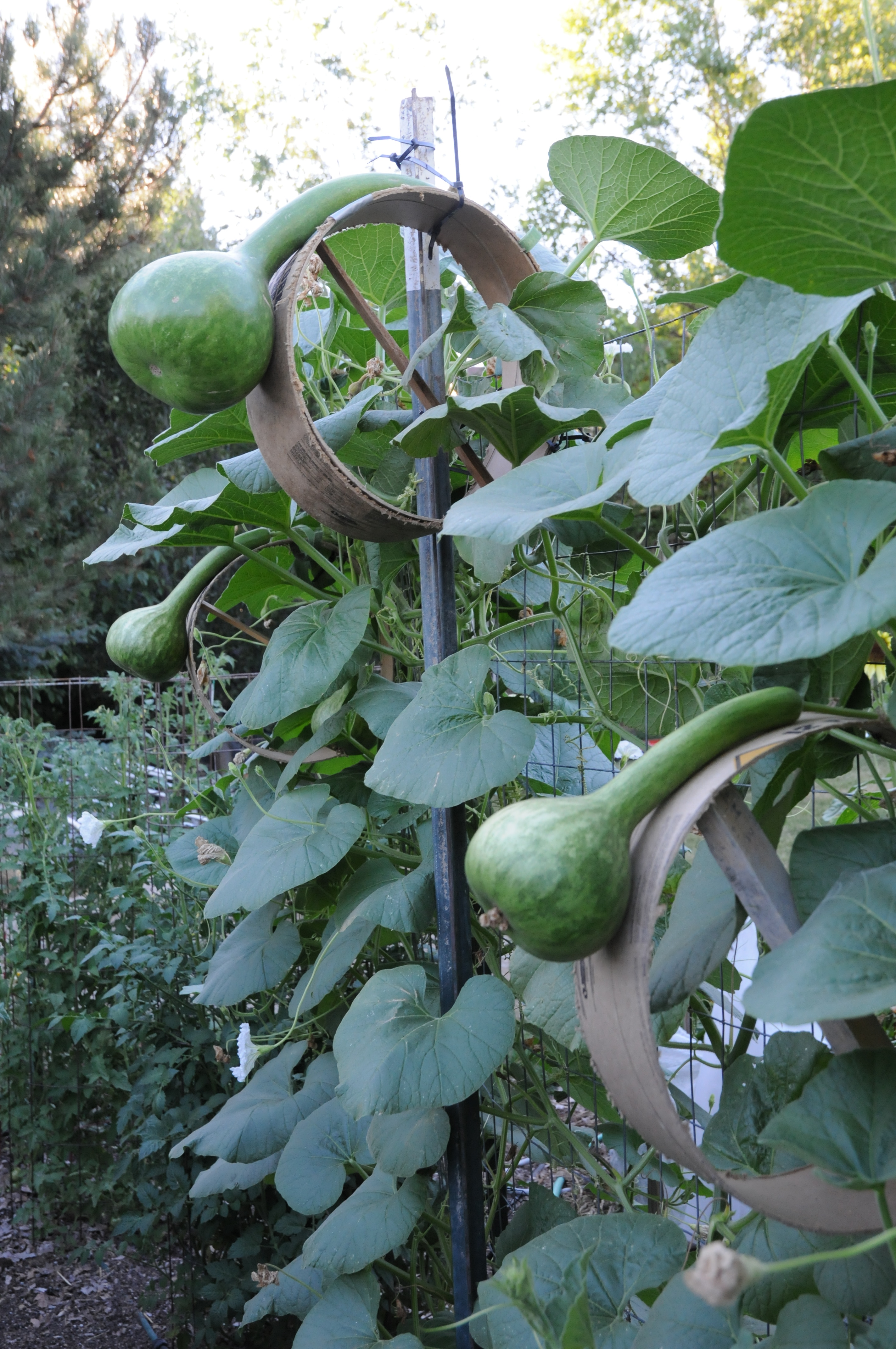
To make a hunting horn, train the extra-long handled dipper into a smooth half circle.
You could grow the various tubes for a trumpet this way, but you'd probably need a set of valves made of metal or plastic.� Plastic trumpets are just now beginning to be accepted as serious instruments, because change is slow in the tradition-bound world of music.
Growing Helmholtz Resonators
These gourds were grown to fit the bars of the baritone marimba.

The variety was perfect for this application because of
their large size and smootly tapering neck.
They were sold to me as 'Mayo bilobal'.

Here is one of the forms used to flatten the gourds as they grow. It needs to be extremely strong to resist the gourd's power. This one is half inch boards reinforced with a movable frame of 2x4s.
Growing Fiddles
Wooden fiddles have faces carved in a gentle arc, and are much thinner than they are wide.
Gourds can be made to take on such a shape by growing them between curving boards.� Compressing them front-to-back makes them wider side-to-side, giving a shape very like a wooden fiddle:

This gourd manipulator shows a Mexican Water Bottle gourd he grew to take a fiddle shape by putting it between masonite boards.
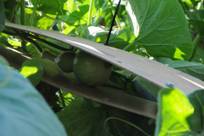
Put the baby gourd between the boards very young.
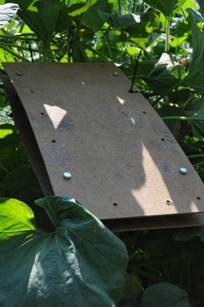
The boards must be thick enough to flatten the gourd but thin enough for the growing gourd to bend into a nice curve.�
Not all gourds treated this way will turn into fiddles. Some will be too small, some skewed, some with top and bottom globes out of proportion to each other. But fiddle failures can be perfect for other types of instruments:
